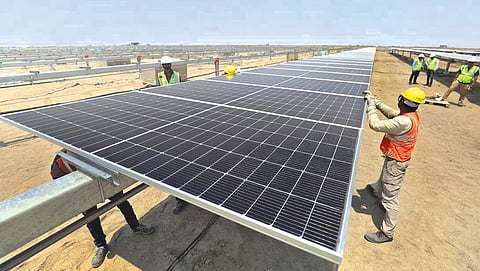

India’s efforts to expand solar and wind power seem to have hit a roadblock. Project developers allege that due to a lack of adequate transmission infrastructure to carry the electricity they generate, dozens of commissioned plants, ready to feed power into the grid, are being forced to sit idle and incur losses. “Between March and August 2025, at least 30 solar and wind plants faced curtailment, with combined losses of up to Rs 700 crore,” chief commercial officer with a renewable project told Down To Earth (DTE), requesting anonymity. Experts say such curtailment is shaking investor confidence and could jeopardise India’s target of installing 500 GW of non-fossil fuel-based electricity capacity by 2030.
The Union Ministry of Power is responsible for laying transmission lines or upgrading existing ones when approving power projects—whether coal-based or renewable. Once a plant is commissioned, it requires general network access (GNA) from the Central Electricity Regulatory Commission (CERC) to begin transmission. However, GNA has not been issued to several newly commissioned solar and wind power plants in the high-generation states of Rajasthan, Gujarat, Maharashtra and Tamil Nadu, according to manufacturers who spoke with DTE on condition of anonymity.
These plants are instead granted temporary general network access (TGNA). This temporary access, usually valid for up to 11 months, allows electricity to be fed into the grid, but only when there is low supply to the lines. “During the six months till August 2025, we were instructed by the Grid Controller of India to embrace curtailments of up to 48 per cent of our daily production...
This article was originally published in the October 1-15, 2025 print edition of Down To Earth